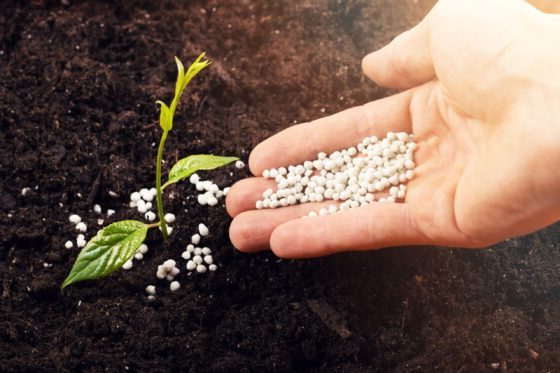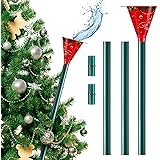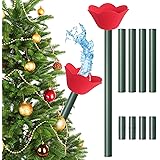Looking for the perfect fertilizer to make your plants flourish? You’ve come to the right place! Choosing the right fertilizer is essential for the overall health and growth of your plants. But with so many options out there, how do you know which one to choose?
Don’t worry, we’ve got you covered. In this article, we will guide you through the process of selecting the best fertilizer for your needs, ensuring that your plants receive the nutrients they crave. So, if you’re ready to take your gardening to the next level, let’s dive right in and learn how to choose fertilizer that will make your plants thrive.
How to Choose Fertilizer: A Comprehensive Guide
When it comes to gardening and cultivating plants, using fertilizer is essential for providing the necessary nutrients that plants need to thrive. However, with the countless options available on the market, choosing the right fertilizer might seem like a daunting task.
In this article, we will guide you through the process of choosing the perfect fertilizer for your specific needs. Whether you are a seasoned gardener or just starting out, this comprehensive guide will help you make an informed decision.
Understanding Fertilizer Basics
Before diving into the selection process, it is crucial to have a basic understanding of fertilizers. Fertilizers are products designed to supplement the nutrients present in the soil, promoting healthy plant growth.
They typically contain a combination of three essential nutrients: nitrogen (N), phosphorus (P), and potassium (K). These nutrients are often referred to as NPK and are displayed on fertilizer packaging as a set of numbers indicating the ratio of each nutrient.
- Nitrogen (N) promotes leafy growth and overall plant vigor.
- Phosphorus (P) aids in root development, flowering, and fruit production.
- Potassium (K) enhances disease resistance and strengthens plant structure.
Assessing Your Soil and Plant Needs
The first step in choosing the right fertilizer is to assess your soil and plant needs. Conducting a soil test can provide valuable insights into the nutrient composition of your soil. You can either purchase a soil testing kit or send a sample to a local soil testing laboratory.
The test results will indicate the pH level, nutrient deficiencies, and other factors that can guide your fertilizer selection.
Additionally, it is crucial to consider the specific requirements of the plants you intend to grow. Different plants have varying nutrient needs, and tailoring your fertilizer choice accordingly will yield optimal results.
Research the specific nutrient requirements of your plants to ensure you provide them with the appropriate fertilizer blend.
Read More: About How Often To Water Kangaroo Fern? A Comprehensive Guide
Choosing the Right Fertilizer Type
Once you have assessed your soil and plant needs, the next step is to choose the appropriate fertilizer type. Fertilizers come in various forms, each with its own advantages and application methods. Here are the most common types:
1. Liquid Fertilizers
Liquid fertilizers are a popular choice due to their ease of use and quick absorption by plant roots. They come in concentrated forms and can be diluted with water according to the manufacturer’s instructions. Liquid fertilizers are commonly applied through foliar spraying or by drenching the soil around the plant’s base.
They are ideal for providing a quick nutrient boost and are suitable for both indoor and outdoor plants.
2. Granular Fertilizers
Granular fertilizers consist of dry, pellet-like particles that are spread on the soil surface. They release nutrients gradually over time as they break down in response to moisture and microbial activity. Granular fertilizers are available in both fast-release and slow-release formulations.
Fast-release granular fertilizers provide an immediate nutrient supply, while slow-release variants release nutrients slowly over an extended period. They are best suited for perennials, trees, shrubs, and larger garden beds.
3. Organic Fertilizers
For those seeking a natural and environmentally-friendly option, organic fertilizers are an excellent choice. Made from natural materials such as compost, manure, bone meal, and blood meal, organic fertilizers enrich the soil with organic matter and nutrients.
They improve soil structure and fertility over time, promoting sustainable plant growth. Organic fertilizers are available in various forms, including pellets, powders, and liquid concentrates.
Understanding Fertilizer Labels
Fertilizer labels contain vital information that can help you make an informed decision. Understanding the information on the label will enable you to choose the right fertilizer for your needs. Here are the key elements to look for on a fertilizer label:
1. NPK Ratio
The NPK ratio is a set of three numbers displayed prominently on fertilizer packaging. These numbers indicate the percentage of nitrogen (N), phosphorus (P), and potassium (K) present in the product.
For example, a fertilizer with an NPK ratio of 10-10-10 contains 10% nitrogen, 10% phosphorus, and 10% potassium. Assess the nutrient requirements of your plants and match them with the appropriate NPK ratio.
2. Secondary and Micronutrients
In addition to the primary nutrients (NPK), some fertilizers also contain secondary and micronutrients. Secondary nutrients include calcium, magnesium, and sulfur, while micronutrients include iron, manganese, zinc, copper, and boron.
These elements are equally important for plant growth, and their presence in a fertilizer can be beneficial, especially if your soil or plants show deficiencies in these nutrients.
3. Application Rates
The application rate indicates the amount of fertilizer to apply per square foot or per plant. Following the recommended application rate is essential to avoid over- or under-fertilizing your plants.
Applying too much fertilizer can lead to nutrient imbalances and potential harm to plants, while under-fertilizing can result in nutrient deficiencies and stunted growth. Always follow the instructions provided by the manufacturer for optimal results.
Considerations for Specific Plants and Situations
While the general guidelines mentioned above are applicable to most situations, certain plants and circumstances require specific attention when choosing fertilizer.
1. Container Plants
Container plants often require more frequent fertilization due to the limited nutrients available in the confined space. Choose a slow-release fertilizer or a liquid fertilizer diluted to half strength to avoid overfeeding the plants.
Regularly monitor the soil moisture levels and adjust the fertilizer application accordingly.
2. Acid-Loving Plants
Plants that prefer acidic soil, such as blueberries, azaleas, and rhododendrons, benefit from fertilizers designed specifically for acid-loving plants.
These fertilizers contain additional sulfur and iron, which help maintain the desired acidity level in the soil.
3. Lawns
For a lush, healthy lawn, select a fertilizer specifically formulated for turf grasses. These fertilizers often have a higher nitrogen content to promote vigorous growth and a balanced ratio of phosphorus and potassium to support root development and disease resistance. Consider a slow-release formulation for longer-lasting results.
Choosing the right fertilizer is the key to successful plant growth and development. By understanding the basics of fertilizers, assessing your soil and plant needs, and considering the specific requirements of your plants, you can make an informed decision.
Remember to read and understand fertilizer labels and follow the recommended application rates. With the right fertilizer, you can provide your plants with the essential nutrients they need to thrive and flourish.
Read More: About How To Keep Grass Out Of Wildflowers?
Frequently Asked Questions (FAQs)
To choose the right fertilizer for your plants, consider the following factors:
– Identify the specific nutrient needs of your plants (e.g., nitrogen, phosphorus, potassium).
– Conduct a soil test to determine the current nutrient levels and pH balance.
– Select a fertilizer that matches the nutrient requirements and soil conditions of your plants.
– Consider the desired release rate of nutrients (slow-release or quick-release).
– Evaluate the formulation of the fertilizer (liquid, granular, or organic).
– Follow the instructions provided by the manufacturer for proper application and dosage.
There are several types of fertilizers available, such as:
– Nitrogen-based fertilizers: These contain a high percentage of nitrogen, which promotes leaf and stem growth.
– Phosphorous-based fertilizers: These are rich in phosphorous, which stimulates root development and flowering.
– Potassium-based fertilizers: These provide potassium, which enhances overall plant health and disease resistance.
– Organic fertilizers: Derived from natural sources, organic fertilizers improve soil structure and nutrient content.
– Synthetic fertilizers: These are chemically formulated fertilizers that provide specific nutrient ratios for targeted plant growth.
The choice between organic and synthetic fertilizers depends on your preference and specific gardening needs. Organic fertilizers are derived from natural sources and improve soil health over time. They are generally safe for the environment and promote long-term sustainability.
Synthetic fertilizers, on the other hand, provide precise nutrient ratios and yield quicker results. Consider factors such as cost, environmental impact, and long-term soil health when making this decision.
Conducting a soil test is highly recommended before choosing a fertilizer. A soil test provides valuable information about the nutrient levels and pH balance of your soil. This allows you to select a fertilizer that addresses any deficiencies and ensures optimal plant growth.
Soil testing also helps prevent over-fertilization, which can harm plants and contribute to environmental issues.
The N-P-K ratio on fertilizer packaging represents the percentage by weight of three primary nutrients: nitrogen (N), phosphorus (P), and potassium (K), respectively.
For example, a fertilizer with a ratio of 10-10-10 contains 10% nitrogen, 10% phosphorus, and 10% potassium. The N-P-K ratio helps determine the nutrient balance of the fertilizer and allows you to choose the appropriate formulation for your plants’ needs.
It is generally recommended to avoid mixing different types of fertilizers together, especially without proper knowledge and guidance. Mixing fertilizers with different nutrient ratios can result in imbalanced nutrition for your plants, potentially causing harm.
If you need to apply multiple fertilizers, it is best to do so separately and according to the instructions provided for each specific fertilizer.
The frequency of fertilization depends on various factors, including plant type, growth stage, and fertilizer type. In general, most plants benefit from regular fertilization during their growing season. This is typically done every 4-6 weeks for annuals and vegetables, and every 6-8 weeks for perennials and trees.
However, it is essential to refer to the specific instructions provided by the fertilizer manufacturer and adjust the frequency accordingly.
Slow-release fertilizers are designed to gradually release nutrients over an extended period. They provide a steady supply of nutrients to plants, minimizing the risk of over-fertilization and reducing the need for frequent applications.
Slow-release fertilizers are convenient for gardeners who prefer a low-maintenance approach or have plants with longer growth cycles. They typically come in granular form and often need to be reapplied less frequently compared to quick-release fertilizers.
Final Thoughts
When choosing a fertilizer, it is crucial to consider several factors to ensure successful plant growth. First, determine the specific needs of your plants, such as their nutrient requirements and pH preferences. Next, select a fertilizer that matches these needs, whether it is organic or synthetic. Consider the fertilizer’s NPK ratio, which indicates the proportion of nitrogen, phosphorus, and potassium.
Additionally, pay attention to the fertilizer’s release method, as slow-release types provide nutrients over a longer period. By carefully assessing these aspects, you can make an informed decision on how to choose fertilizer that best suits your plants’ needs.
Auto Amazon Links: No products found.
Perfect Plants Christmas Tree Saver 8oz. | Easy Use Xmas Tree Preserver Food | Have Healthy Green Christmas Trees All Holiday Season
$9.97 (as of December 12, 2025 05:04 GMT +00:00 - More info- Product prices and availability are accurate as of the date/time indicated and are subject to change. Any price and availability information displayed on [relevant Amazon Site(s), as applicable] at the time of purchase will apply to the purchase of this product.
Rocky Mountain Goods Christmas Tree Food - 8 oz Tree Preservative - Reduce Needle Drop - Greener Scent - Fir, Pine, Spruce Trees - Extend Tree Life
$9.95 (as of December 12, 2025 05:04 GMT +00:00 - More info- Product prices and availability are accurate as of the date/time indicated and are subject to change. Any price and availability information displayed on [relevant Amazon Site(s), as applicable] at the time of purchase will apply to the purchase of this product.
VICAMB 39.3 Inch Christmas Tree Watering Funnel,Christmas Tree Watering System Device,Long Tree Watering Funnel Spout for Indoor Outdoor Xmas Tree
$16.99 (as of December 12, 2025 05:04 GMT +00:00 - More info- Product prices and availability are accurate as of the date/time indicated and are subject to change. Any price and availability information displayed on [relevant Amazon Site(s), as applicable] at the time of purchase will apply to the purchase of this product.
FirEver Pure Christmas Tree Food | Preserver Additive & Season Extender for Live Xmas Trees | Keep It Green, Reduce Needle-Drop | Miracle Freshness (8 oz)
$14.99 (as of December 12, 2025 05:04 GMT +00:00 - More info- Product prices and availability are accurate as of the date/time indicated and are subject to change. Any price and availability information displayed on [relevant Amazon Site(s), as applicable] at the time of purchase will apply to the purchase of this product.
EZMeetU Christmas Tree Watering Funnel, 47 Inch Flower Shape Adjustable 6 Section Design, Christmas Tree Watering System, Christmas Tree Waterer, Long Funnel Wide Opening Reusable, Plant Watering Tool
$16.99 (as of December 12, 2025 05:04 GMT +00:00 - More info- Product prices and availability are accurate as of the date/time indicated and are subject to change. Any price and availability information displayed on [relevant Amazon Site(s), as applicable] at the time of purchase will apply to the purchase of this product.
Snow Joe Premium Enviro Blend Ice Melt, Green-Coated Deicer Crystals, 50 lb - Safer Melter for Vegetation, Concrete & Metals w/ Anti-Corrosion Calcium Magnesium Acetate
$32.97 (as of December 12, 2025 19:27 GMT +00:00 - More info- Product prices and availability are accurate as of the date/time indicated and are subject to change. Any price and availability information displayed on [relevant Amazon Site(s), as applicable] at the time of purchase will apply to the purchase of this product.
Muddy Mat® Shown on TV Super Absorbent Microfiber Dog Door Mat for Muddy Paws, Non-Slip Washable Pet Rug, Quick Dry Chenille Entryway Carpet, Machine Washable Indoor Outdoor mat, Grey 30"x19"
$24.95 (as of December 12, 2025 19:27 GMT +00:00 - More info- Product prices and availability are accurate as of the date/time indicated and are subject to change. Any price and availability information displayed on [relevant Amazon Site(s), as applicable] at the time of purchase will apply to the purchase of this product.
ivtivfu Rolling Grill Basket, Removable Wooden Handle, 304 Stainless Steel, Nesting BBQ Tools, Smoker Grilling Accessories for Vegetable, Outdoor Cooking Camping, Birthday Gifts for Men Dad Husband
$25.99 (as of December 12, 2025 19:27 GMT +00:00 - More info- Product prices and availability are accurate as of the date/time indicated and are subject to change. Any price and availability information displayed on [relevant Amazon Site(s), as applicable] at the time of purchase will apply to the purchase of this product.
XXXFLOWER Plant Terrarium with Wooden Stand, Air Planter Bulb Glass Vase Metal Swivel Holder Retro Tabletop for Hydroponics Home Garden Office Decoration - 3 Bulb Vase
$18.98 (as of December 12, 2025 19:27 GMT +00:00 - More info- Product prices and availability are accurate as of the date/time indicated and are subject to change. Any price and availability information displayed on [relevant Amazon Site(s), as applicable] at the time of purchase will apply to the purchase of this product.
Zevo Flying Insect Trap Official Refill Cartridges - Fits Both Zevo Trap & MAX Indoor Fly Trap - Authentic Trap+Lock Technology to Catch Gnats, House & Fruit Flys (4 Official Refill Cartridges)
$14.97 (as of December 12, 2025 19:27 GMT +00:00 - More info- Product prices and availability are accurate as of the date/time indicated and are subject to change. Any price and availability information displayed on [relevant Amazon Site(s), as applicable] at the time of purchase will apply to the purchase of this product.











